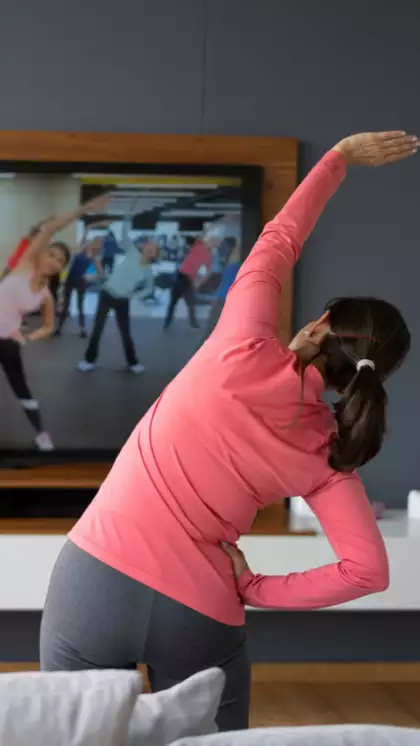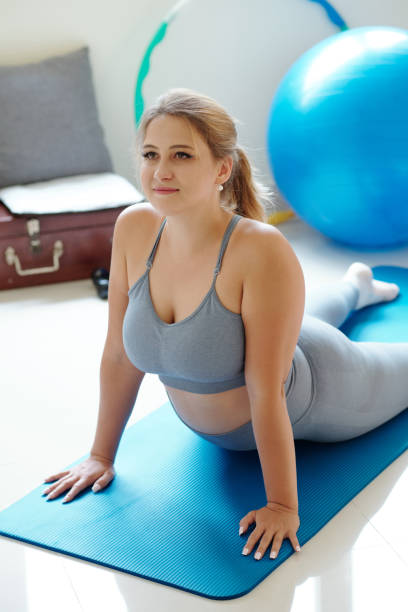Stay Fit This Winter | Expert Physiotherapy Tips For Injury Prevention And Recovery


Stay Fit This Winter: 10 Professional Physiotherapy Tips for Sports Injuries Prevention and Rehabilitation
Winter has a lot of positives that come with it – warm blanket days, winter sports, and the Christmas spirit. Nevertheless, it opens a few concerns, especially in as much as the physical fitness of a person is concerned. Cold weather, icy floors, and early twilights are dangerous for this population because it raises the probability of receiving an injury even while exercising outdoors. But don’t worry! Here are some tips which can help you to receive no injuries during the winter and recover fast if you have one.
In today’s article, we’ll take a closer look at the tricks shared by experienced physiotherapists that will let you of avoiding injuries and swim through the winter fitness crisis unscathed.
- Warm-Up and Stretch Properly
The Importance of Warming Up: In cold, muscles and joints become more rigid, and blood flow within your body can be slower than in other seasons. Stretching before exercise is necessary to avoid muscle pulls, joint sprains, cold weather diseases etc. A proper warm-up raises the usual temperature of the muscles, promotes blood flow and prepares the recipient’s body for more intense movements.
Expert Tip:
A 10–15 mins of aerobic movements (like brisk walking, cycling etc) and stretching exercises are good since it prepares the muscles and joints to allow movements and prevent possible injury. Some dynamic stretching includes leg swing, hip scraper, and arm swing. Sorry, static stretches i.e. adopting a certain stretch position and trying to maintain it during the warm up can sometimes results in muscular strains if one is not careful.
- Layer Up and Dress Appropriately
The clothing one wears during work out in the winter is very important for not only comfort, but also for avoiding injury. Cold muscles and stiffness of the joints can cause injuries easily and failing to dress appropriately exposes one to strains, sprains, or even frost bites during very cold weather.
Expert Tip:
Always wear moisture-wicking clothing because you want sweat to be as far away from your skin as you can get it. Wear multiple layers of clothing to be able to control the amount of heat you’re losing or gaining. The next layer should be insulating and this can be fleece, the outer layer should be waterproof and wind resistant to shield you from rain or wind. It is very important to wear right shoes for the type of activity or exercise that one is undertaking and ensure they come with the right traction to ensure the person does not slip especially when it is icy or wet.
- Be Mindful of Icy Surfaces
Slips and falls are a bigger problem in the winter as paths and roads become icy and slippery. Still, one of the most frequent virtual accidents that occur during the cold season is a twisted ankle or a wrist from a slip. Hence it is necessary to change your pattern of walking or running to minimize it.
Expert Tip:
When you are outside or jogging or walking, try to shorten your stride and keep your body weight over your base of support. Anytime you’re out and about be sure to check for any patches that have frozen over and it is advisable to use various measures such as using ice cleats. Activities that are especially suitable when exercising indoors include walking on a treadmill, swimming or use of the stationary bicycle or taking yoga classes in order to achieve your workout sessions without the risks involved in falling down.
- Maintain Proper Posture
The periods of cold also affect posturing since one will be more inclined to hunch over in an effort to get warm all covered up. Abnormal postures whether while sitting, standing or walking puts a lot of stress and can lead to muscle imbalances, strain and injury.

Expert Tip:
Try to avoid neglecting your body’s positioning in general or during work time in particular. If you are inclined for a period of time, make sure that your back is correctly supported than sitting, and your shoulders are free. For example during walking or jogging the head should be up, the shoulder blade should be set back and the abdomen tightened. Healthy posture means correct alignment, musculature and flexibility, which can be achieved from daily practice of good stretches like shoulder rolls and chest stretches.
- Tips: Winter Exercise Adjust Your Fitness Routine for the Cold
Again, exercising during one season is easy especially when one does not have to change the routines and techniques used all summer, but carrying on with such routines in the winter increases the chances of over using a certain muscle or joint hence incurring a lot of problems. It is also common to find people more tired, less motivated to exercise and therefore develop improper form or poor technique.
Expert Tip:
Make changes to the exercises in order to develop full body strength and range of motion. This can include strength exercises done indoors, yoga, pilates, or cycling etc. If you enjoy outdoors, find other ways you can engage in like; winter hiking, snowshoeing or cross-country skiing, these are good forms of exercises with little to no impact exerted on the joints. Remember, however, that winter means that you have to take it a little easier and reduce your pace if you are to avoid getting frostbite.
- Hydrate and Nourish Your Body
If you already know how important it is to stay hydrated, especially in hot summer, you do not have to think that it will not be essential in the winter, when you are exercising. When the body is dehydrated extreme effects such as muscle cramps, fatigue, and susceptibility to injury are expected. Also, dryness during winter may lead to formation of muscle rigidity and joint pain, therefore; diet is very important to ensure that the body tank is well stocked and ready for activity.
Expert Tip:
Consume a lot of water before, during, and after every workout session as it has effects too. Although you are less likely to feel the urge to grab a glass of water in the winter you still loose water through sweating and breathing. To promote the building up of new tissues and recovery from workouts, try to incorporate foods high in protein and healthy fats, and low in refined carbohydrates and sugars, in a well balanced manner, and foods with antioxidants and anti-inflammatory nutrients like dark green vegetables, blue berries, and Omega-3 Fats.
- Protect Your Joints and Muscles
Cold weather can cause similar problems to current joint discomfort, rigidity, or injury. It’s important to be particularly careful during winter workouts if you have arthritis or history of injuries. Physiotherapy presents specific solutions for exercising and building muscles around specific joints that maybe at risk of further breakdown.
Expert Tip:
This entails performing some flexibility exercises that involves stretching, and performing some YOGA to ensure the joint is continuously mobile and well lubricated. If you have joint pain that is chronic, or if you have had an injury in that area, you may Click for Source apply heat or ice (like washcloths soaked in warm water or ice packs) after exercising. In case of joint problems, it is recommended to visit a physiotherapist who will create a special exercise plan to strengthen problem points.
- Cool Down and Recover
As you need a warm up you need a cool down in order to assist your body in coming down after intense exercise. Muscles stiffen after cold workouts and when the body is not adequately warmed down, then muscle inflammation and the recovery time will be prolonged.
Expert Tip:
To treat such things, after your training, which is in your case about 30 minutes, spend 5 to 10 minutes on stretching and make sure to follow it by gently touching the muscles that got under working. Also, one needs to perform some breathing exercises to try and lower heart rate back to a resting rate. Another way to break down muscle tightness and ease pain there and also for recovery is to use a foam roll or a massage gun. Make sure to speak to your doctor about your medical history or experience regular check-ups if you have a medical condition which may affect the fitness routine, do not neglect proper nutrition and plenty of water to drink and lots of sleep in order to give your muscles adequate time to recover when exercising.
- Injury Recovery: Physiotherapy Tips
Unfortunately accidents can occur and despite all measures being taken they can still occur. However if you do get injured, it is wise to follow the correct techniques of rehabilitation in order to heal the broken part a lot quicker. These are some of the common winter Injuries, Acute Sprains, Acute Strains and Falls and resulting in Fractures.
Expert Tip:
With a new injury you should just remember R.I.C.E. – Rest, Ice, Compression, Elevation. , where possible, also use ice to help reduce inflammation and swelling and make sure the injured area is raised. After the initial shooting pain has occurred, the healing patient should follow up with low impact stretching, as well as range of motion and strength training that a physiotherapist would prescribe. A physiotherapist can also provide certain exercise routines which focuses on your specific injury.
- Consult a Physiotherapist
As a physiotherapist, it is advisable that you get professional advice which suits your case depending on wants to be achieved whether it is in prevention or even healing process . They can look at your biomechanics, your position and movement; they can suggest what exercises you might profit from and which ones to avoid because they neglect weak areas in your body and develop others. This approach can be of especial useful when it comes to both the avoidance of injuries and the general training of the body.
Expert Tip:
If you’re new to winter sports or have a condition causing chronic pain it would be wise to arrange a session with a physiotherapist at the beginning of the winter season to determine possible problem areas and develop an early prevention plan. They can also keep track how you fair with and make changes to your prescriptions if needed.
